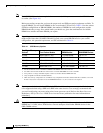
45
Flash Disks and Flash Memory Cards in the GRP
78-4339-09
Implementing Additional Configuration and Maintenance Tasks
Step 2 Enter the copy startup-config slot0:filename command as follows:
Router# copy startup-config slot0:myfile2
20575008 bytes available on device slot0, proceed? [confirm]
Address or name of remote host [1.1.1.1]?
Loading new.image from 1.1.1.1 (via Ethernet0):
!!!!!!!!!!!!!!!!!!!!!!!!!!!!!!!!!!!!!!!!!!!!!!!!!!!!!!!!!!!!!!!!!
!!!!!!!!!!!!!!!!!!!!!!!!!!!!!!!!!!!!!!!!!!!!!!!!!!!!!!!!!!!!!!!!!
!!!!!!!!!!!!!!!!!!!!!!!!!!!!!!!!!!!!!!!!!!!!!!!!!!!!!!!!!!!!!!!!!
!!!!!!!!!!!!!!!!!!!!!!!!!!!!!!!!!!!!!!!!!!!!!!!!!!!!!!!!!!!!!!!!!
!!!!!!!!!!!!!!!!!!!!!!!!!!!!!!!!!!!!!!!!!!!!!!!!!!!!!!!!!!!!!!!!!
!!!!!!!!!!!!!!!!!!!!!!!!!!!!!!!!!!!![OK - 7799951/15599616 bytes]
CCCCCCCCCCCCCCCCCCCCCCCCCCCCCCCCCCCCCCCCCCCCCCCCCCCCCCCCCCCCCCCCC
CCCCCCCCCCCCCCCCCCCCCCCCCCCCCCCCCCCCCCCCCCCCCCCCCCCCCCCCCCCCCCCCC
CCCCCCCCCCCCCCCCCCCCCCCCCCCCCCCCCCCCCCCCCCCCCCCCCCCCCCCCCCCCCCCCC
Router#
Note In the preceding example, the exclamation points (!!!) appear as the file is copied. The C characters
signify calculation of the checksum—a verification that the file has been correctly copied.
You can also copy the running configuration (located in DRAM) to a Flash memory card or Flash
disk, as shown in the “Copying Configuration File from GRP DRAM to Flash Memory Card or Flash
Disk” section on page 45.
Step 3 Verify that the file was copied correctly using the dir command as follows:
Router# dir slot0:
-#- -length- -----date/time------ name
1 5200084 May 10 1997 19:24:12 gsr-p-mz.112-8
3 1215 May 10 1997 20:30:52 myfile1
4 6176844 May 10 1997 23:04:10 gsr-p-mz.112-8.1
5 1186 May 10 1997 16:56:50 myfile2
9197156 bytes available (11381148 bytes used)
Router#
Copying Configuration File from GRP DRAM to Flash Memory Card or Flash Disk
Following is an example of copying your running configuration file from GRP DRAM to a Flash memory
card or Flash disk in PCMCIA slot 0 or slot 1.
Note If using an ATA Flash disk, replace any commands that include a slot0: or slot1: command argument
with a disk0: or disk1: command argument.
You can use the command copy running-config [slot0: | slot1:]filename (Flash memory card), or
copy running-config [disk0: | disk1:]filename (Flash disks) where running-config is the file’s source
(the temporary configuration in DRAM), and [slot0: | slot1:]filename is the file’s destination in either
of the Flash memory cards or Flash disks.


















